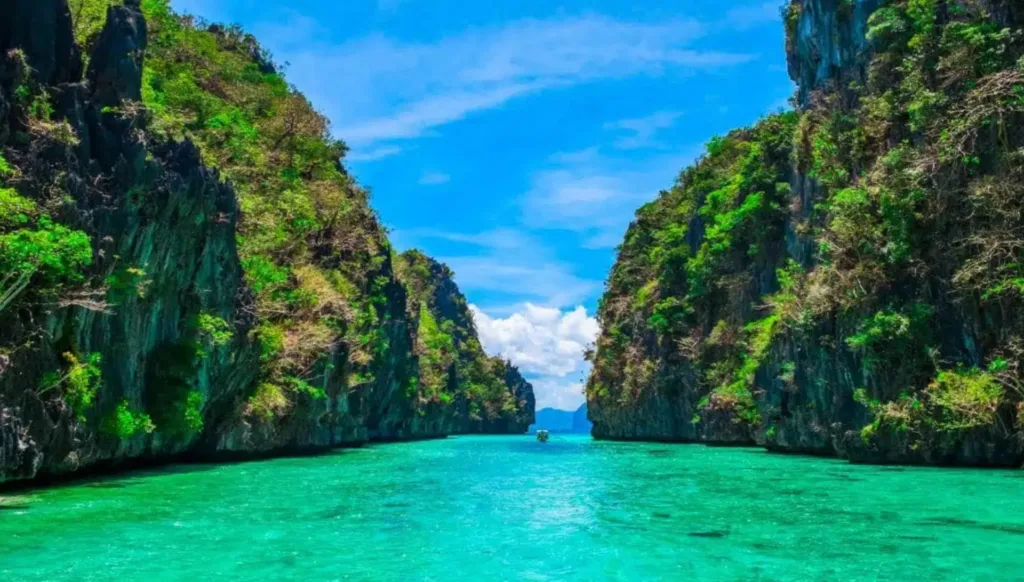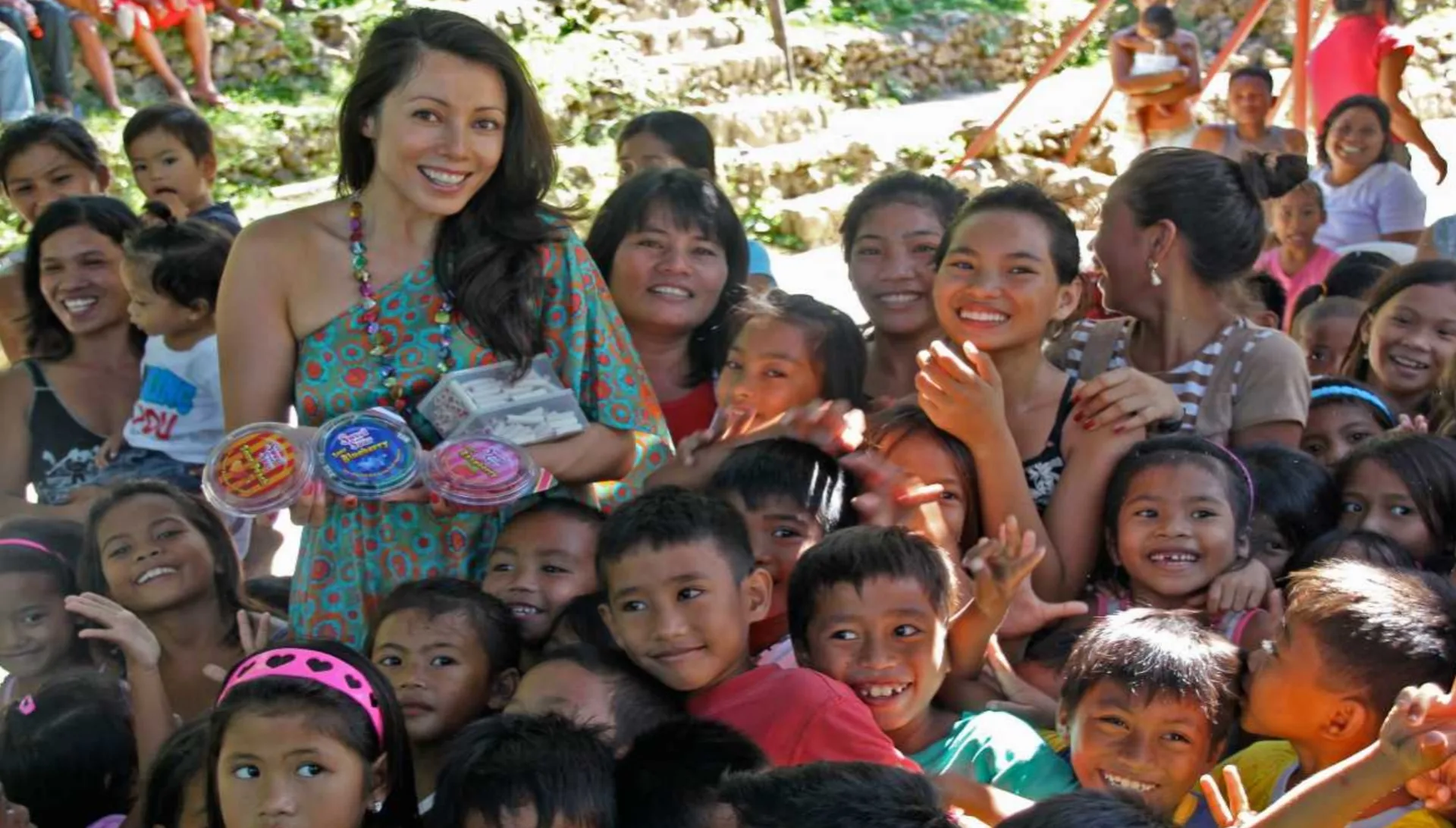introduction:
Beautiful Philippines, A nation that beckons with the promise of unparalleled beauty at every turn. Nestled in the embrace of Southeast Asia, the Philippines is a captivating archipelago, a symphony of over 7,000 islands adorned with natural wonders that paint a breathtaking portrait of diversity.
In this exploration, we embark on a journey through the beautiful Philippines, where each island is a brushstroke on a canvas of stunning landscapes. From pristine beaches with powdery white sands and crystal-clear turquoise waters to lush mountains adorn
ed with emerald-green rice terraces, the beauty of the Philippines is a tapestry woven with the threads of nature’s finest artistry.
Beyond the landscapes, the Philippines boasts a cultural richness that enhances its allure. A fusion of indigenous traditions, Spanish colonial influences, and a warm hospitality that defines the Filipino spirit, make every encounter a brush with the beauty of shared humanity.
Significance of the Beautiful Philippines in Southeast Asia :
Beautiful Philippines holds significant importance in the Southeast Asian region, and its role extends beyond its geographical boundaries. Here are key aspects highlighting the significance of the Philippines in Southeast Asia:

- Strategic Geographical Location:
- The Philippines is strategically located in the western Pacific Ocean, serving as a natural gateway between the Pacific and Southeast Asia.
- Its proximity to major shipping routes and maritime passages makes it a crucial player in regional trade and commerce.
- Economic Hub:
- As one of the largest and fastest-growing economies in Southeast Asia, the Philippines contributes substantially to the economic dynamics of the region.
- It serves as an economic hub, attracting investments and fostering trade relationships with neighboring countries.
- Cultural and Historical Ties:
- The Philippines has historical ties with neighboring countries, including influence from Malay, Chinese, Spanish, and American cultures. This diversity contributes to the rich tapestry of Southeast Asian cultural heritage.
- Shared historical experiences, such as colonization and struggles for independence, create common threads that connect the Philippines with its Southeast Asian neighbors.
- Political and Security Cooperation:
- The Philippines plays a role in regional political and security cooperation through its membership in ASEAN (Association of Southeast Asian Nations). ASEAN aims to promote peace, stability, and economic development in the region.
- The Philippines actively participates in diplomatic efforts to address regional challenges and foster collaboration on issues like territorial disputes, climate change, and security concerns.
- Maritime and Environmental Importance:
- With its extensive coastline and numerous islands, the Philippines is a key player in regional maritime affairs.
- The country’s marine biodiversity and ecosystems contribute to the overall environmental health of Southeast Asia, making it important for regional conservation efforts.
- Tourism and Cultural Exchange:
- The Philippines is a popular destination for tourism, drawing visitors from within Southeast Asia and beyond.
- Cultural exchange and tourism contribute to people-to-people connections, fostering a deeper understanding and appreciation of the diverse cultures within the region.
- Human Resource Contribution:
- The Filipino diaspora is significant, with a large number of overseas Filipino workers (OFWs) contributing to the economies of various Southeast Asian countries and beyond.
- The skills and labor of Filipinos play a role in the development and growth of industries in neighboring nations.
Geography and Landscapes
The geography and landscapes of the Beautiful Philippines are incredibly diverse, ranging from pristine beaches and tropical islands to mountainous terrains and lush rainforests. Here’s a detailed exploration:
- Archipelagic Nature:
- The Beautiful Philippines is an archipelago consisting of over 7,000 islands, making it one of the largest island groups in the world.
- The three main geographical divisions are Luzon, Visayas, and Mindanao, each offering unique landscapes and cultural nuances.
- Major Islands and Regions:
- Luzon: The largest island, where the capital, Manila, is located. Luzon is known for its volcanic landscapes, including the iconic Mayon Volcano and Taal Volcano.
- Visayas: The central region with a collection of islands renowned for their white-sand beaches, coral reefs, and vibrant marine life. Destinations like Boracay and Cebu attract tourists from around the globe.
- Mindanao: The southern region characterized by mountain ranges, deep gorges, and fertile plains. Mount Apo, the country’s highest peak, is found in Mindanao.
- Volcanoes and Ring of Fire:
- The Philippines is part of the Pacific Ring of Fire, an area with a high degree of tectonic activity. This results in numerous volcanoes, hot springs, and seismic activity.
- Taal Volcano, located in a caldera within a lake, is one of the world’s most active volcanoes.
- Mountainous Terrain:
- The country is marked by mountainous terrain, with mountain ranges crisscrossing various islands. The Cordillera Central in Luzon is home to the famous Banaue Rice Terraces, a UNESCO World Heritage Site.
- Rice Terraces:
- Often referred to as the “Eighth Wonder of the World,” the Banaue Rice Terraces are an engineering marvel, carved into the mountains by indigenous people over 2,000 years ago.
- Coastlines and Beaches:
- The Philippines boasts some of the world’s most beautiful beaches with powdery white sands and crystal-clear waters. Palawan, known for El Nido and Coron, is a prime example of the country’s beach paradise.
- Coral Reefs and Marine Biodiversity:
- The Philippines is part of the Coral Triangle, an area with the highest diversity of coral reef species. This makes it a haven for snorkeling and diving enthusiasts.
- Tropical Rainforests:
- The country is home to extensive tropical rainforests, particularly in Mindanao. These forests house diverse flora and fauna, some of which are endemic to the Philippines.
- Natural Reserves and Parks:
- Protected areas like Tubbataha Reefs Natural Park and Mount Hamiguitan Range Wildlife Sanctuary contribute to the conservation of the country’s natural heritage.
- Tidal Bore Phenomenon:
- The Philippines experiences tidal bore phenomena in several rivers, such as the Porac River in Pampanga, where large waves move upstream during high tide.
The geography and landscapes of the Philippines not only offer stunning vistas but also play a crucial role in shaping the country’s cultural and ecological diversity.
Culture and Heritage of the Philippines: A Tapestry of Diversity:

Beautiful Philippines stands as a cultural mosaic, where the past and present converge in a harmonious blend of traditions, values, and artistic expressions. Rooted in a pre-colonial history that spans thousands of years, Filipino culture is marked by a profound connection to the land, a strong sense of community, and a spirit of resilience.
Indigenous Traditions: The diverse indigenous communities scattered across the archipelago contribute unique practices that have withstood the test of time. From the Ifugao’s intricate rice terraces to the rhythmic beat of the Maguindanao kulintang ensemble, these traditions form the foundation of the Filipino identity.
Colonial Influences: Centuries of Spanish and American colonization have left indelible marks on Filipino culture. The Spanish era introduced Catholicism, shaping religious practices and festivals. Meanwhile, American influence can be seen in aspects like the English language and the prevalence of basketball, a sport deeply ingrained in the Filipino way of life.
Festivals and Celebrations: The Philippines is renowned for its vibrant festivals that showcase the cultural diversity of each region. Sinulog in Cebu, Ati-Atihan in Aklan, and the grand Flores de Mayo are colorful celebrations that fuse religious devotion with lively street performances, traditional dances, and elaborate costumes.
Cuisine: Filipino cuisine is a delightful reflection of its cultural melting pot. Influences from Malay, Chinese, Spanish, and American culinary traditions create a symphony of flavors. Adobo, sinigang, and lechon are just a few examples of the mouthwatering dishes that define Filipino gastronomy.
Bayanihan Spirit: At the core of Filipino culture is the “bayanihan” spirit—a sense of community and shared responsibility. Whether rebuilding a house or celebrating a fiesta, the Filipinos’ innate generosity and camaraderie shine through, fostering a strong sense of unity.
Language and Literature: The Philippines is a linguistic tapestry with over 170 languages and dialects. Filipino, based on Tagalog, serves as the national language. Philippine literature, both ancient and contemporary, reflects the country’s complex history and diverse cultural influences.
Beautiful Philippines embraces modernity, its culture and heritage remain resilient, with each generation contributing to the evolving narrative of a nation proud of its roots. The vibrant tapestry of Filipino culture invites exploration, celebration, and a deeper understanding of a people whose identity is as diverse as the archipelago they call
“Tourism” in Beautiful Philippines:
Welcome to a realm where azure waters gently kiss powdery white shores, emerald rice terraces climb mountainsides, and vibrant festivals paint the streets with a kaleidoscope of colors. The Philippines, an archipelago of 7,000 islands, beckons intrepid travelers to explore a tapestry of tourism wonders unlike any other.
Island Paradise Unveiled: Immerse yourself in the allure of pristine beaches, where palm-fringed shores meet crystal-clear waters. From the idyllic stretches of Boracay to the hidden coves of Palawan, each island reveals a unique chapter in the Philippines’ story of sun, sea, and sand.
Cultural Spectacles: Step into a world of festivals that transcend mere celebration, becoming vibrant expressions of Filipino identity. Whether it’s the Sinulog Festival’s rhythmic beats in Cebu or the grandeur of the Panagbenga Flower Festival in Baguio, cultural spectacles await, inviting you to dance, feast, and revel in the nation’s diverse traditions.
Underwater Wonderland: Plunge into the depths of an underwater paradise, where coral gardens teem with life and technicolor fish dance through the warm embrace of tropical seas. The Tubbataha Reefs Natural Park and Apo Reef promise awe-inspiring encounters for divers seeking to explore vibrant marine ecosystems.

Breathtaking Landscapes: Venture into the heart of the Philippines’ natural wonders, where emerald-green rice terraces sculpt mountainsides into living artworks. The Banaue Rice Terraces, a testament to ancient engineering, and the captivating Chocolate Hills in Bohol paint landscapes that captivate the soul.
Hidden Gems and Local Charms: Wander off the beaten path to discover the Philippines’ hidden gems. Engage with local communities, savor the flavors of street food markets, and explore untouched landscapes that reveal the authentic essence of this tropical paradise.
Adventure Awaits: Whether you seek the thrill of water sports, the challenge of conquering peaks like Mount Pulag, or the serenity of island-hopping escapades, the Philippines offers adventures for every soul. Zip-line over lush canopies, surf Pacific waves, or simply find solace in the tranquility of nature’s embrace.
Beautiful Philippines, tourism is not just an itinerary; it’s an odyssey that resonates with the spirit of exploration. Prepare to be enchanted, as each island unfurls a new chapter, inviting you to be a part of a story that celebrates the unparalleled beauty and warmth of the Filipino archipelago.








